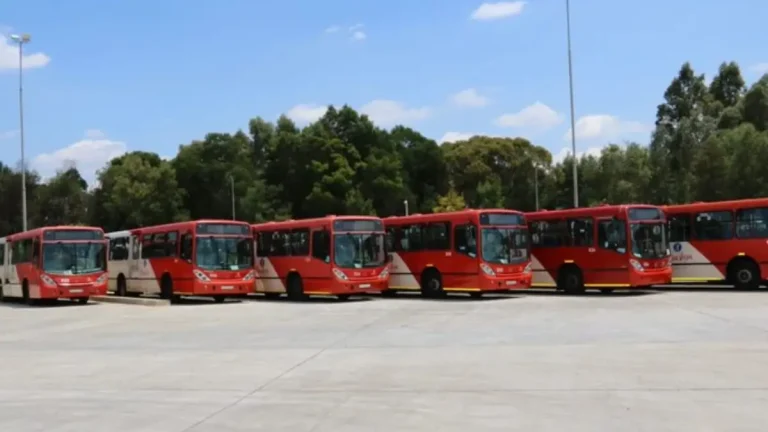After more than a decade of setbacks, the City of Johannesburg has officially launched the long-delayed Rea Vaya Bus Rapid Transit (BRT) Phase 1C(a) route. The long-awaited opening marks a significant milestone in improving public transport accessibility across key parts of the city.
Thank you for reading this post, don't forget to subscribe!Decade-Long Wait Comes to an End
The official launch took place on Friday, attended by Johannesburg Mayor Dada Morero and MMC for Transport Kenny Kunene. Their presence underscored the importance of completing a project that has faced more than ten years of challenges since it was first announced.
Originally introduced in 2014, the route was initially projected to be operational by 2015. However, various hurdles — including political shifts, procurement delays, and the impact of the Covid-19 pandemic — repeatedly stalled progress. Despite partial construction over the years, full service only resumes now, with the city confirming the readiness of all major infrastructure.
Connecting Key Johannesburg Corridors
Phase 1C(a) will link some of Johannesburg’s most crucial economic and residential areas. The route stretches from Berea and Yeoville through Orange Grove, Norwood, Balfour Park, Bramley, Wynberg, Alexandra, Marlboro, Athol, and Sandton. It then continues onwards, ending in Longmeadow and Greenstone.
This corridor is vital for thousands of commuters travelling daily between Alexandra and Sandton, with estimates suggesting over 10,000 people walk between the two areas each day. The reopening aims to ease that burden, providing a safer, faster, and more reliable public transport option.
Overcoming Operational and Political Setbacks
While construction appeared to be on track by 2022, the Rea Vaya board was dissolved in 2023 after its operator, PioTrans, was placed under business rescue. This setback halted progress once again.
However, earlier this year, the city revived the project. Damaged and vandalised stations were refurbished, road markings were repainted, and new signage was installed. The once-abandoned stops were cleared of scaffolding as final inspections were completed.
Infrastructure Ready for Service
Rea Vaya confirmed that all 13 low-floor stations along the Louis Botha Avenue to Sandton corridor are nearly complete. The route also features three major bridges, the Rea Vaya bus and pedestrian bridge along Lees Street in Marlboro, a cycling and walking bridge near Grayston Drive, and the Heritage bridge in Berea near the old Herbert Baker bus station.
These upgrades not only improve public transport but also enhance pedestrian and cyclist safety along one of Johannesburg’s busiest arteries.
A Step Forward for the City’s Transport Network
The Johannesburg Development Agency (JDA) initially divided the project into two sections, Section 8 and Section 15. Section 8 connects Alexandra to Sandton via a 4km route that includes a flyover across the M1 and extends into the Sandton Gautrain Station precinct. Complementary works included pavement upgrades, traffic calming measures, and the construction of a new bus depot in Alexandra.
With all major works now complete, buses will resume operations, finally delivering on a promise made more than ten years ago.
Moving the City Forward Again
For many residents, the reopening of the Rea Vaya route represents more than just a new transport option, it’s a symbol of renewal and commitment to efficient urban mobility. After years of uncertainty, Johannesburg commuters can once again rely on a service designed to connect communities, reduce congestion, and drive the city’s growth forward.
Related article: Rea Vaya Expands: New Bus Routes Coming to Sandton and Alexandra




